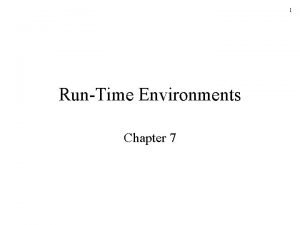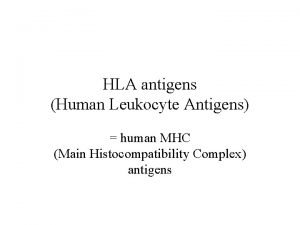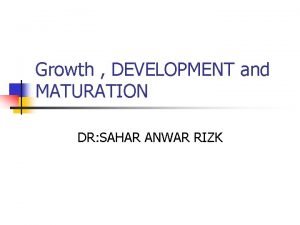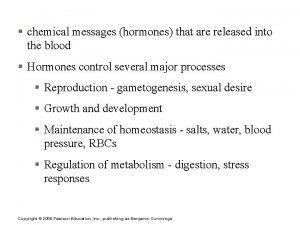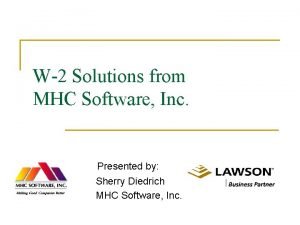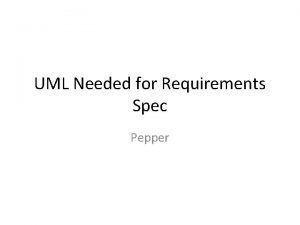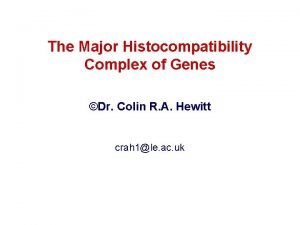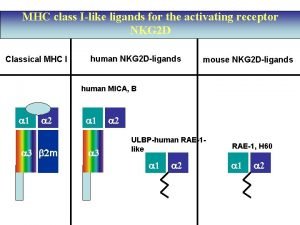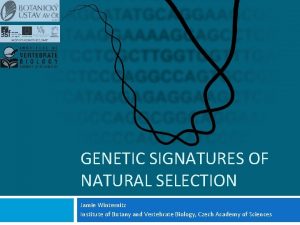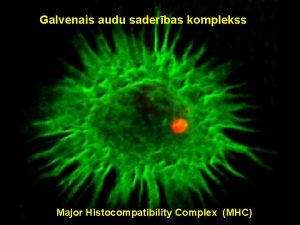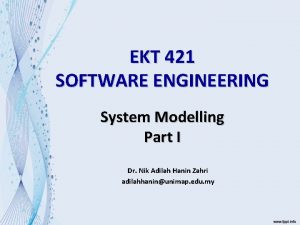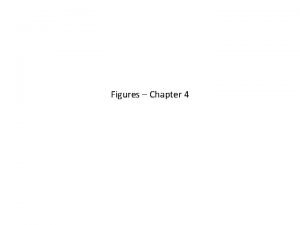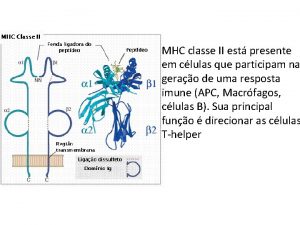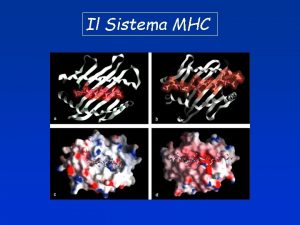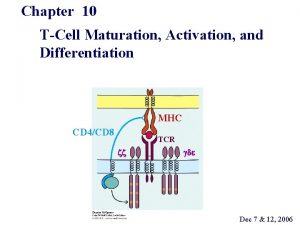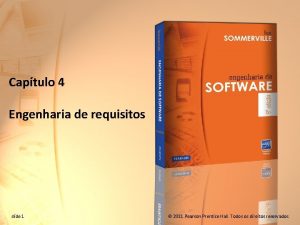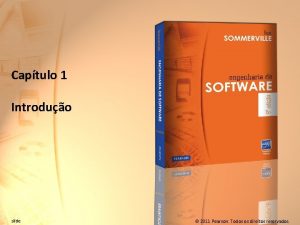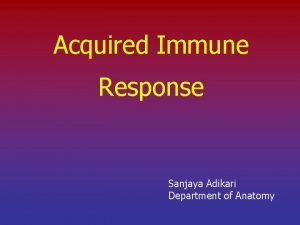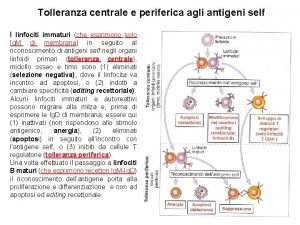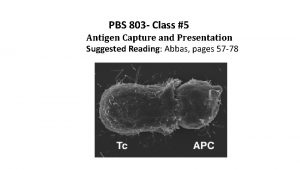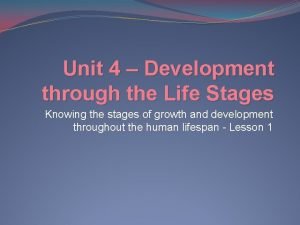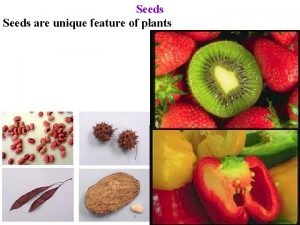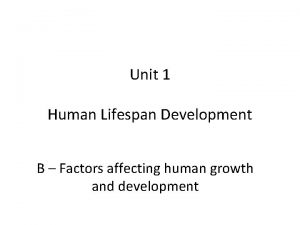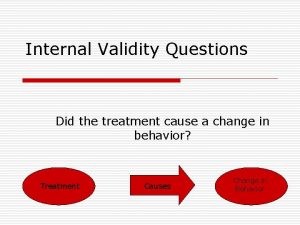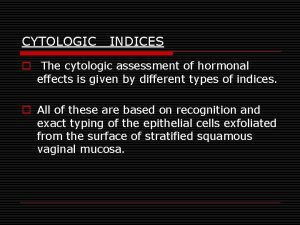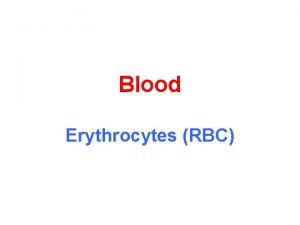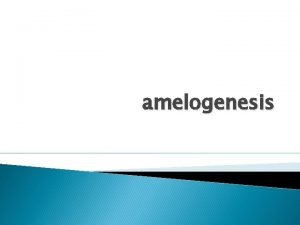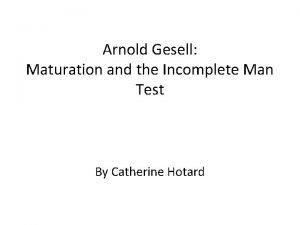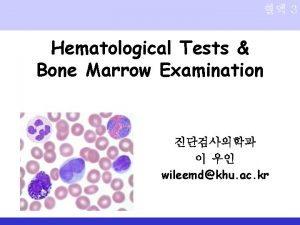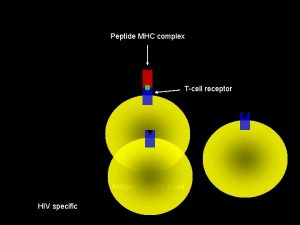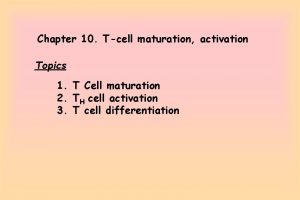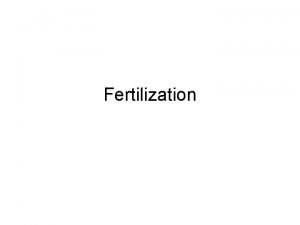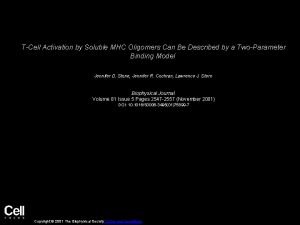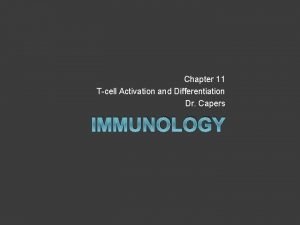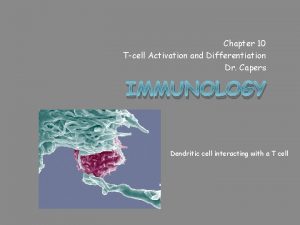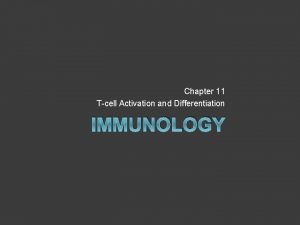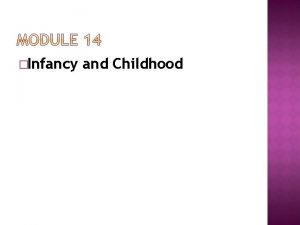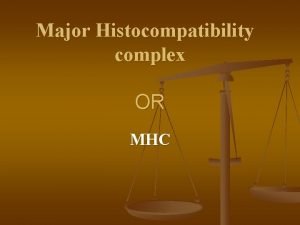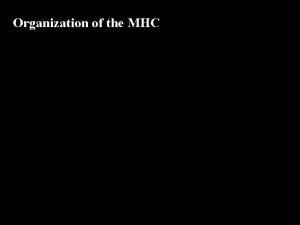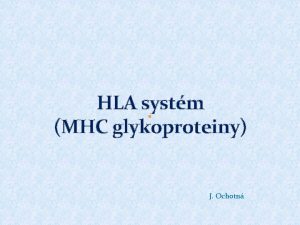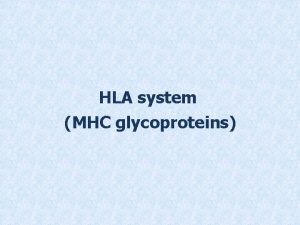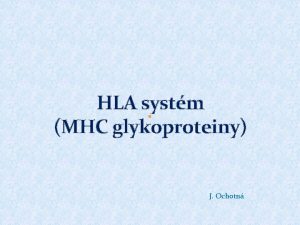Chapter 10 TCell Maturation Activation and Differentiation MHC











































- Slides: 43

Chapter 10 T-Cell Maturation, Activation, and Differentiation MHC CD 4/CD 8 TCR zz gde Dec 7 & 12, 2006

你需要學習的課題: 1. 什麼叫做 positive selection 及 negative selection? 它們產生什麼結果? 2. T 細胞需要 costimulatory signals 才得完全活化。 3. 什麼叫做 clonal anergy? 4. Superantigen 有何性質及作用? 5. T 細胞分化及其 subpopulations。 6. T 細胞凋亡。

Two-step Selection Process of Thymocytes Positive Selection: permits the survival of only those T cells whose TCRs recognize self-MHC molecules. generation of a self-MHC-restricted repertoire of T cells Negative Selection: eliminates T cells that react too strongly with self-MHC or with self-MHC plus self-peptides. generation of a T-cell repertoire that is self-tolerant Thymic stromal cells, which express high levels of class I and class II MHC molecules, play a role in this process.

Thymic Stromal Cells Play Essential Roles in Positive and Negative Selection Stromal cells: maturation (expressing Notch ligand) produce regulatory factors and express high levels of class I and class II MHC molecules

Development of ab T Cells in the Mouse receptor for stem-cell growth factor recombinationactivating gene (RAG-1/2) adhesion molecule involved in homing [CD 3 -, CD 4 -, CD 8 -] a chain of IL-2 R H (double negative; CD 4 -CD 8 -) L < 5% positive selection negative selection

Pre-TCR (pre-Ta / TCRb) Activates Signal Transduction Pathways

Thymic Selection of the T -Cell Repertoire

Positive Selection Ensures MHC Restriction (double positive cells) class II class I death by neglect !

Negative Selection Ensures Self-tolerance

Thymus only selects for T cells whose TCRs recognize Ag presented on target cells with the haplotype of the thymus irradiated infect with LCMV chimeric mouse (source for cytotoxic T cells)

Positive Selection Requires Binding of Thymocytes to Class I or Class II MHC Molecules

CD 8+ T cells only mature in transgenics with H-2 k corresponding to the MHC restriction of the TCR transgene → Interaction between TCR and self-MHC on immature thymocytes is required for positive selection.

Negative Selection of Thymocytes Requires Both Self-peptide & Self-MHC ♂ ♀ → Interaction between TCR and MHC + peptide on immature thymocytes is required for negative selection. → H-Y-reactive thymocytes were self-reactive in the male mice and were eliminated.

A Paradox in Positive and Negative Selection The T cells which recognize self-MHC : after positive selection → survival ↓ after negative selection → death What is left ? ? ?

Study of Thymic Selection in Vitro gestational age of day 16 consisting of CD 4 -CD 8 thymocytes ↓ Study the development of T cells in vitro

Effect of Peptides in Thymic Selection TAP deficient cells (described in Chapter 8 p. 211) - RMA-S cell line is an antigen processing-defective tumor cell line. It expresses only ~ 5% of the normal levels of class I MHC on the membrane, although the cells synthesize normal levels of class I a chains and b 2 M. - Addition of pre-digested peptides to RMA-S cells restores the expression of class I MHC molecules on the membrane. TAP -/- mouse very few CD 8+ cells When a diverse peptide mixture is added to the culture, the CD 8+ T-cell restoration is greater than when a single peptide is added.

dependent on TCR-peptide-class I interactions recognizes a specific MHCLCMV peptide unable to form peptide-MHC complexes unless peptide is added avidity hypothesis (quantitative) vs differentialsignaling hypothesis (qualitative)

Models for the Role of CD 4/CD 8 Coreceptors in DP → SP (double positive to single positive) T Cells


TH -Cell Activation The central event in the generation of both humoral and cell-mediated immune responses is the activation and clonal expansion of TH cells. Interaction of a TH cell with Ag initiates a cascade of biochemical events that induces the resting TH cell to enter the cell cycle, proliferating and differentiating into effector cells or memory cells.

TCR Engagement Initiates Multiple Signaling Pathways Overview of Common Themes in Signal Transduction (Chapter 1 p. 11) (hydrophobic)



Multiple Signaling Pathways Are Initiated by TCR Engagement ITAM: immunoreceptor tyrosine-based activation motif



Activation of the small G protein, Ras

Immediate genes, expressed within 30 min of Ag recognition, encode a number of transcription factors.

Early genes, expressed within 1 – 2 hr of Ag recognition, encode cytokines & cytokine receptors.

Late genes, expressed more than 2 days after Ag recognition, encode various adhesion molecules.

Co-stimulatory Signals Are Required for Full T-cell Activation Naïve T cells require 2 distinct signals for activation and proliferation into effector cells Signal 1 the initial signal, is generated by interaction of an antigenic peptide with the TCR-CD 3 complex. Signal 2 a subsequent Ag-nonspecific costimulatory signal, is provided by interactions between CD 28 on the T cell and members of the B 7 family on the APC.

TH-cell Activation Requires a Co-stimulatory Signal Provided by APCs CD 28 is expressed by both resting and activated T cells. + B 7 -1 (CD 80) CTLA-4 is expressed on activated T cells. (CD 152) CD 28 & CTLA-4 act antagonistically. B 7 -2 (CD 86) B 7 (B 7 -1 and B 7 -2) are constitutively expressed on dendritic cells, and induced on activated macrophages and activated B cells.

Clonal Anergy Ensues if a Co-stimulatory Signal Is Absent Clonal Anergy (Unresponsiveness): - inability of cells to proliferate in response to a peptide-MHC complex - If a resting TH cell receives the TCR-mediated signal (signal 1) in the absence of a suitable co-stimulatory signal (signal 2), the TH cell become anergic. - In the presence of both signal 1 and signal 2, clonal expansion results.

induction of B 7 is inhibited. CD 28 no signal 2

The Resulting Anergic T Cells Cannot Respond to Normal APCs

signal 1 signal 2

Differences in the Properties of 3 Kinds of Professional APCs

Activation of a TH Cell Up-regulates Expression of IL-2 and IL-2 Receptor, Leading to the Entry of the T Cell into the Cell Cycle The co-stimulatory signal increases the half-life of the IL-2 m. RNA ↓ entry into cell cycle memory cells IL-2 100 x ↑ effector T → TH & T C

Effector TH cells: short-lived TH 1 subset: - secretes IL-2, IFN-g, and TNF-b - responsible for cell-mediated functions, such as delayed-type hypersensitivity and the activation of CTL TH 2 subset: - secretes IL-4, IL-5, IL-6, and IL-10 - helper for B-cell activation Memory TH cells: long-lived - Less stringent requirements for activation due to the expression of high levels of numerous adhesion molecules Regulatory T cells (Treg): CD 4+CD 25+ cells that inhibit the proliferation of other T-cell populations in vitro.

Superantigen-mediated Crosslinkage of TCR and Class II MHC Molecules Exogenous superantigens : exotoxins secreted by G(+) bacteria, e. g. , staphylococcal enterotoxin A & B (SEA, SEB) Endogenous superantigens: - Viral or bacterial proteins that bind simultaneously to particular Vb sequences of TCR and to the a chain of a class II MHC molecule – induce polyclonal T-cell activation & proliferation cell-membrane proteins encoded by certain viruses that infect mammalian cells, e. g. , mouse mammary tumor viral (MMTV) protein

Programmed Cell Death Is an Essential Homeostatic Mechanism

normal thymocyte apoptotic thymocyte

Two Pathways to T-cell Apoptosis AICD : activationinduced cell death TCRmediated negative selection: Fas-associated protein with death domain apoptosisinducing factor apoptotic proteaseactivating factor 1
 Activation tree example
Activation tree example Major histocompatibility complex structure
Major histocompatibility complex structure Mhc and hla
Mhc and hla Sahar anwar
Sahar anwar Concept of learning ppt
Concept of learning ppt Hormonal stimulus
Hormonal stimulus Mhc software inc
Mhc software inc Mhc-pms use case diagram
Mhc-pms use case diagram Mhc molecules
Mhc molecules Mhc evolution
Mhc evolution Class i vs class ii mhc
Class i vs class ii mhc Ijvv de zwervers contributie
Ijvv de zwervers contributie Disruptive selection
Disruptive selection Mhc molekula
Mhc molekula Mhc-pms meaning
Mhc-pms meaning Ock
Ock Mhc-pms meaning
Mhc-pms meaning Mhc-pms in software engineering
Mhc-pms in software engineering Mhc-pms
Mhc-pms Mhc
Mhc Poligenia mhc
Poligenia mhc Eagle mhc
Eagle mhc T cell mhc
T cell mhc Mhc-pms
Mhc-pms Mhc-pms
Mhc-pms T cell mhc
T cell mhc Mhc proteine
Mhc proteine Parham
Parham Mhc ede
Mhc ede Chapter 4 requirements engineering
Chapter 4 requirements engineering Mhc fully integrated managed care
Mhc fully integrated managed care Unit 4 development through the life stages
Unit 4 development through the life stages Seed maturation
Seed maturation Maturational theory
Maturational theory Affinity maturation somatic hypermutation
Affinity maturation somatic hypermutation Gesell's theory
Gesell's theory Selection by maturation interaction
Selection by maturation interaction Relationship between development and learning
Relationship between development and learning Maturation index 0/90/10
Maturation index 0/90/10 Hyalomere and granulomere
Hyalomere and granulomere Desmolytic stage
Desmolytic stage What is gesell's theory of development
What is gesell's theory of development Maturation
Maturation Left shift maturation
Left shift maturation
